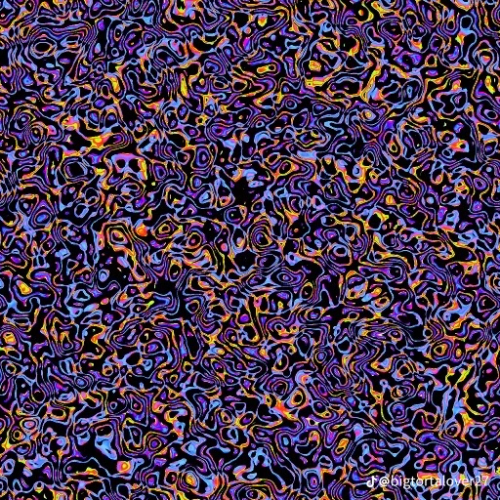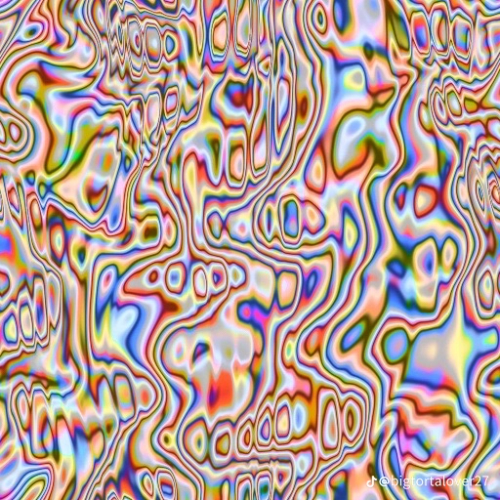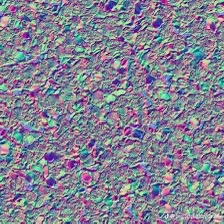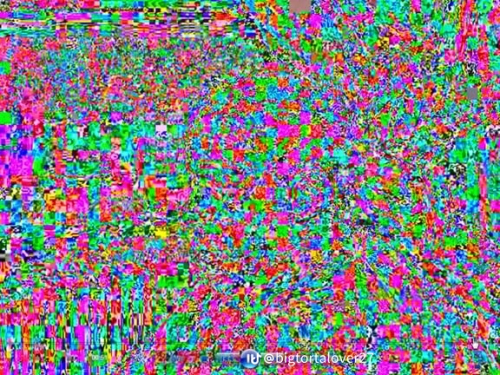Sharing This Here Too
Sharing this here too



I do not usually make posts like this but recently I have seen a lot of content on Instagram, Twitter and I think tiktok too misunderstanding the meaning of intrusive thoughts, which may cause people experiencing them to be upset.
I have tried to shortly explain the difference of impulsive and intrusive and hope it will help people to understand and use the words correctly.
Reblogs are very much appreciated!
More Posts from Dabriaanderlaine and Others
What makes White Collar hold up so much better than other police procedurals:
It was part of the "pretty happy shows with gorgeous ensemble casts and a charismatic weird guy" USA network era but it somehow used that to be about stuff that is so REAL
What is justice? Is our system fair? Can you be a criminal and still be a good man? Can you be a good man and still work for the system?
The bad guys are rich assholes, and people defrauding families out of their homes, and unethical pharmaceutical companies. People manipulating energy supply out of greed resulting in blackouts which are showing *harming a dog,* aka how to show something is monstrous in a pg show written by a white person. Class exists in this universe in more ways than having a cardboard concept of a "rich guy."
The bad guys include police, FBI agents, prison staff, judges, senators. Those people cause real harm, obstruct justice, plant evidence, kill people. It's shown how the system protects them and harms regular people.
The harm that causes the main character to go from wanting to be part of the system, to subverting and working against it, is him finding out about an act of police corruption, brutality, and murder--and what's more, that if he became a cop, that's what he could become.
The harm that causes the main character to be outside the white picket fence is that the system failed his family after that act. What happened to Neal's mom? Why did nobody besides Helen step in? They had to check in with US Marshals, did nobody notice this kid didn't have an adult fit to parent?
So Neal turns to found family. And let's be real, heavily polyamory coded found family at that. But he keeps chasing the idea of a girl who will be everything. But he's got all this attachment trauma so he never does. But because found family is real family, even the people who freaking played the characters are still connected a decade later
I'm trying to prove a point to my brain: Reblog if you think fanfiction does not need sex to be good.
There is a trend I’ve noticed that smut fics tend to be much more popular than anything else and honestly I just want to have something to look at to remind myself and that writing doesn’t have to have sex to be worth putting out into the community.
when in writers block (bc me too)
yes i realize this isn’t 100% foolproof and doesn’t work for everyone but it sure as hell helps me (at least a bit) when i don’t know where to start. good luck writing and may words flow from you faster than water in the largest waterfall ever <3
reread your old writing
revisit unfinished discarded projects
just write. everything. search up prompts and write your characters into them even if you’re not feeling it — which i know is easier said than done but we as writers need to realize that sometimes we gotta do what we don’t want to do
start a new book (ignore the pile of unfinished wips ok??!?!?!!!)
browse apps ((like pinterest) sounds anti productive but actually helps)
inspiration is literally everywhere and in everything u just need to know where to look, whether that be online or in person where you’re observing relationships w people and how humans act
on the opposite end of the spectrum: close that google doc… and just take a break. most ideas come when you’re not trying to force them out like ur life depends on it
ask a friend to read some writing and give their prediction of what will happen next… then use it !
just don’t give up!!!!!!! think about how an incredible book could be written and we wouldn’t even know because writers block kicked in & u gave up </3
Subplots 101
Subplots are an essential part of storytelling that can add depth and complexity to your book's overall narrative. This post covers a step-by-step guide to making subplots, general tips, and some examples of subplots in YA books.
Step-by-step guide to making a new subplot
Identify a secondary character
Consider a secondary character in your story who is not directly involved in the main plot. This could be a friend or family member of the protagonist, or a peripheral character who has a unique perspective on the world of the story.
Create a conflict
Think about a conflict or challenge that this character could face, which could be related to their personal life or a separate issue in the story. This conflict should be something that the character needs to overcome or resolve.
Connect the subplot to the main plot
Consider how this subplot could connect to the main plot. This could involve having the main character help the secondary character with their conflict, or having the subplot reveal important information that impacts the main plot.
Develop the subplot
Once you have established the groundwork for the subplot, develop it in detail, including the character's motivations, the obstacles they face, and the resolution to the conflict.
General tips for a good subplot:
Make sure your subplots are related to the main plot
Subplots should be tied to the main plot in some way, either by affecting the main character or providing additional context for the story.
Develop separate character arcs
Your subplots should have their own character arcs that tie in with the main character's arc. This allows for additional character development and can help create a more immersive world.
Use subplots to reveal new information
Subplots can be a great way to reveal new information about the world or characters that might not be relevant to the main plot. This can help make the world feel more alive and fleshed out.
Keep subplots contained
Subplots should not take over the main plot. They should be contained and serve to enhance the main plot rather than distract from it.
Examples of subplots:
Harry Potter and the Goblet of Fire by J.K. Rowling
Harry and Draco's rivalry
Hermione's fight for the rights of house-elves
the mystery surrounding the Death Eaters.
The Hunger Games by Suzanne Collins
The main plot of The Hunger Games is Katniss's fight to survive in the games. However, there are several subplots that tie into the main plot, such as her complicated relationship with Peeta and her struggle to reconcile her feelings for him with her need to survive.
Remember, subplots should enhance and support the main plot of your story, adding depth and complexity to the overall narrative. I'd recommend having 2-3 subplots of varying depth, depending on how important they are to the story, but obviously that's entirely up to you.
I think one of the most profound forms of love is "I'll try that, for you. I may not like it, but I'll try it."
It's a confused middle-aged man in a pottery class, whose daughter is helping him with his clay's plasticity. It's a kid scrunching up their brow while listening to their mom's favorite music, trying to figure out why she likes it. It's a girlfriend who says "Yes, I'll go with you" and her girlfriend cheering and buying a second ticket for a con. It's a friend half dragging another friend through an aquarium, the one being dragged laughing and calling out "Wait, wait, I know we're here for the exhibit, but I haven't been here! Slow down!"
It's being willing to spend some of your time trying something new because it makes someone you love happy.
Reminder not to edit while you write. You want to finish that story someday? Then stop editing while you write!
Fixing an obvious error/typo in the sentence you just wrote is fine, but we're not talking about that. Do not reread, do not continue searching for errors, do not even spellcheck in case that leads you down the editing rabbithole.
Finish the story. The clock is ticking on that muse and distractions waste precious time!
Learn the Differences Between Novelettes, Novellas, and Novels
Since I am currently in the process of writing a story, but I'm not sure what I want it to be... I'd figure I'd go ahead and share the differences!
So let's get to it!
Writing the first draft of a novel can be a daunting, arduous task. That’s why the novelette format can be so appealing. In many ways, a novelette is like a short novel. It allows writers to hone their craft by learning how to tell stories under a strict word count restriction.
What Is a Novelette?
The definition of “novelette” is any short, fictional work of prose narrative. Novelettes have a lower number of words than a novel or novella, but a higher word count than other forms of prose fiction like short stories or microfiction. Despite lacking the page count of a full-length novel, novelettes generally tell a complete story. Some people refer to novelettes as “long short stories” or “short novellas.”
How Long Is a Novelette?
Any work of fiction with a word count between 7,500 and 19,000 is generally considered a novelette. A novelette is longer than a short story, which usually has a word range of between 1,000 and 7,500 words, and flash fiction, which is usually under 1,000 words. Any piece of creative writing that is longer than a novelette but shorter than a novel is considered a novella.
Three Differences Between Novelettes and Novellas
A novella is a standalone piece of fiction that is shorter than a full-length novel but longer than a short story or novelette. Novellas incorporate many narrative and structural elements of novel-length stories—but like novelettes, they often focus on single points of view, focusing on a single central conflict, and rely on fast pacing. Here are the differences between novelettes and novellas:
Word count: The primary difference between a novelette and a novella, then, is word count (novelettes are shorter than novellas).
Subject matter: Traditionally, novelettes tended to focus on whimsical, sentimental themes. The modern-day novelette, though, is more like the novella in that it can encompass different genres like sci-fi, drama, or historical short fiction.
Complexity: In terms of storytelling ambition, novelettes tend to split the difference between novellas and shorter forms like short stories. Novelettes tend to have a greater focus on character development, worldbuilding, and plotting than short stories. However, the stories are generally more concise and focused than a novella-length work, as the word count is often too restrictive to tell a long story.
Three Differences Between Novellas and Novels
The most obvious difference between novels and novellas is page length and number of words. However, beyond this superficial difference, many structural and thematic hallmarks of novellas make them their own standalone genre of writing. Some of these include:
A single central conflict: Most novellas explore a single, compelling central conflict. Because of their shorter length, novellas have less time to explore subplots and tend to focus on the main plot. Novellas generally have one main character and a handful of secondary characters. Because of length constraints, most of the character development will be focused on the protagonist.
Fast pacing: Novellas usually move at a quick pace. Whereas novels can spend time diverging from the central conflict to delve into backstory and explore multiple points of view, novellas generally offer a quick compelling story with a singular point of view.
Unity of time and place: When writing novellas, writers should root the action in continuous time within a limited space, ideally one location.
Benefits of Writing a Novelette
For short story writers or people who generally write shorter works, novelettes can be an opportunity to tell a longer-form, standalone story. For writers who are used to writing, say, full-length science fiction or fantasy novels, the word count restriction of a novelette offers a chance to tell a good story with a simple cast of characters and few subplots.
Seven Examples of Novelettes
Novelette writers know how to tell a complete story in a relatively short amount of time. Here are some famous examples of novelettes, many of which were originally published in literary magazines:
The Fall of the House of Usher by Edgar Allan Poe (1839)
The Strange Case of Dr. Jekyll and Mr. Hyde by Robert Louis Stevenson (1886)
The Metamorphosis by Franz Kafka (1915)
The Call Of Cthulhu by H. P. Lovecraft (1928)
The Little Prince by Antoine de Saint-Exupéry (1943)
Bloodchild by Octavia E. Butler (1995)
Hell Is the Absence of God by Ted Chiang (2001)
I hope this helps! Thank you for still being my followers and patiently waiting for a post!
Color synonyms cheat-sheet
Here’s my ultimate list of synonyms for every colour that you can use in your descriptive writing! Save this post to find them easy later.
Red
scarlet
vermillion
ruby
blood
wine
cerise
crimson
cherry
maroon
coral
rust
sanguine
blush
burgundy
Blue
azure
cobalt
sapphire
cerulean
marine
navy
indigo
teal
denim
ocean
lapis
sky
turquoise
Yellow
amber
gold
lemon
sand
saffron
ivory
dandelion
honey
butterscotch
mustard
canary
flaxen
maize
Green
olive
emerald
grassy
verdant
sage
lime
pine
juniper
chartreuse
seafoam
moss
fern
jade
forest
Black
jet
obsidian
onyx
raven
charcoal
ink
shadowed
dark
midnight
grease
void
White
pearl
alabaster
egg shell
cotton
snow
ivory
frost
bone
powder
light
chiffon
cream
ashen
Orange
amber
tangerine
marigold
clay
apricot
peach
sandstone
honey
bronze
fire
ochre
titian
auburn
Purple & Pink
lavender
plum
lilac
violet
magenta
mauve
orchid
blush
fuschia
salmon
grape
mulberry
periwinkle
iris
Brown
chestnut
hazel
ginger
sepia
mahogany
cedar
cinnamon
beige
bronze
auburn
coffee
walnut
wood
umber
tawny
-
 drowninginfandomsus liked this · 1 month ago
drowninginfandomsus liked this · 1 month ago -
 nyxofbees liked this · 1 month ago
nyxofbees liked this · 1 month ago -
 xx-thanatos-xx liked this · 1 month ago
xx-thanatos-xx liked this · 1 month ago -
 alergic-to-peeple reblogged this · 1 month ago
alergic-to-peeple reblogged this · 1 month ago -
 un1v3rsalh0pper liked this · 1 month ago
un1v3rsalh0pper liked this · 1 month ago -
 ghoulposer liked this · 1 month ago
ghoulposer liked this · 1 month ago -
 tamariasykes reblogged this · 1 month ago
tamariasykes reblogged this · 1 month ago -
 new-nintendo-2ds-xl liked this · 1 month ago
new-nintendo-2ds-xl liked this · 1 month ago -
 somebodynew1guess reblogged this · 1 month ago
somebodynew1guess reblogged this · 1 month ago -
 somebodynew1guess liked this · 1 month ago
somebodynew1guess liked this · 1 month ago -
 hazbinpanther liked this · 1 month ago
hazbinpanther liked this · 1 month ago -
 starlitweb liked this · 1 month ago
starlitweb liked this · 1 month ago -
 everlearning-nerverknowing reblogged this · 1 month ago
everlearning-nerverknowing reblogged this · 1 month ago -
 foxydemon666 liked this · 1 month ago
foxydemon666 liked this · 1 month ago -
 spodderly liked this · 1 month ago
spodderly liked this · 1 month ago -
 hisuianserperior reblogged this · 1 month ago
hisuianserperior reblogged this · 1 month ago -
 hisuianserperior liked this · 1 month ago
hisuianserperior liked this · 1 month ago -
 stormsintheskies liked this · 1 month ago
stormsintheskies liked this · 1 month ago -
 jellyamp liked this · 1 month ago
jellyamp liked this · 1 month ago -
 vibin-in-the-void reblogged this · 2 months ago
vibin-in-the-void reblogged this · 2 months ago -
 lonnnysillysally liked this · 2 months ago
lonnnysillysally liked this · 2 months ago -
 asakala reblogged this · 2 months ago
asakala reblogged this · 2 months ago -
 asakala liked this · 2 months ago
asakala liked this · 2 months ago -
 spectator-lawful-evil reblogged this · 2 months ago
spectator-lawful-evil reblogged this · 2 months ago -
 shouldwemaybe reblogged this · 2 months ago
shouldwemaybe reblogged this · 2 months ago -
 iimnothereyet liked this · 2 months ago
iimnothereyet liked this · 2 months ago -
 uchihadreams reblogged this · 2 months ago
uchihadreams reblogged this · 2 months ago -
 sir1rocky1road liked this · 2 months ago
sir1rocky1road liked this · 2 months ago -
 fireboaserpent reblogged this · 2 months ago
fireboaserpent reblogged this · 2 months ago -
 fireboaserpent liked this · 2 months ago
fireboaserpent liked this · 2 months ago -
 200lizardsattack reblogged this · 2 months ago
200lizardsattack reblogged this · 2 months ago -
 lots-of-lesbeans-2 liked this · 2 months ago
lots-of-lesbeans-2 liked this · 2 months ago -
 codexnuminous reblogged this · 2 months ago
codexnuminous reblogged this · 2 months ago -
 typhonlure reblogged this · 2 months ago
typhonlure reblogged this · 2 months ago -
 typhonlure liked this · 2 months ago
typhonlure liked this · 2 months ago -
 marblerunning reblogged this · 2 months ago
marblerunning reblogged this · 2 months ago -
 neocelticavalon liked this · 2 months ago
neocelticavalon liked this · 2 months ago -
 erinsmysticalhands liked this · 2 months ago
erinsmysticalhands liked this · 2 months ago -
 ayeeitsali reblogged this · 2 months ago
ayeeitsali reblogged this · 2 months ago -
 ayeeitsali liked this · 2 months ago
ayeeitsali liked this · 2 months ago -
 obsessedwithecho liked this · 2 months ago
obsessedwithecho liked this · 2 months ago -
 sailorsleepyhead liked this · 2 months ago
sailorsleepyhead liked this · 2 months ago -
 indigoisaspookyghost2 liked this · 2 months ago
indigoisaspookyghost2 liked this · 2 months ago -
 indigoisaspookyghost2 reblogged this · 2 months ago
indigoisaspookyghost2 reblogged this · 2 months ago -
 szarcasmk1lls liked this · 3 months ago
szarcasmk1lls liked this · 3 months ago -
 jesterjabbering reblogged this · 3 months ago
jesterjabbering reblogged this · 3 months ago -
 crime-santa liked this · 3 months ago
crime-santa liked this · 3 months ago -
 deathnumber383 reblogged this · 3 months ago
deathnumber383 reblogged this · 3 months ago -
 screeeeeeeeeeeeaaaaaaaaaammmmm liked this · 3 months ago
screeeeeeeeeeeeaaaaaaaaaammmmm liked this · 3 months ago







